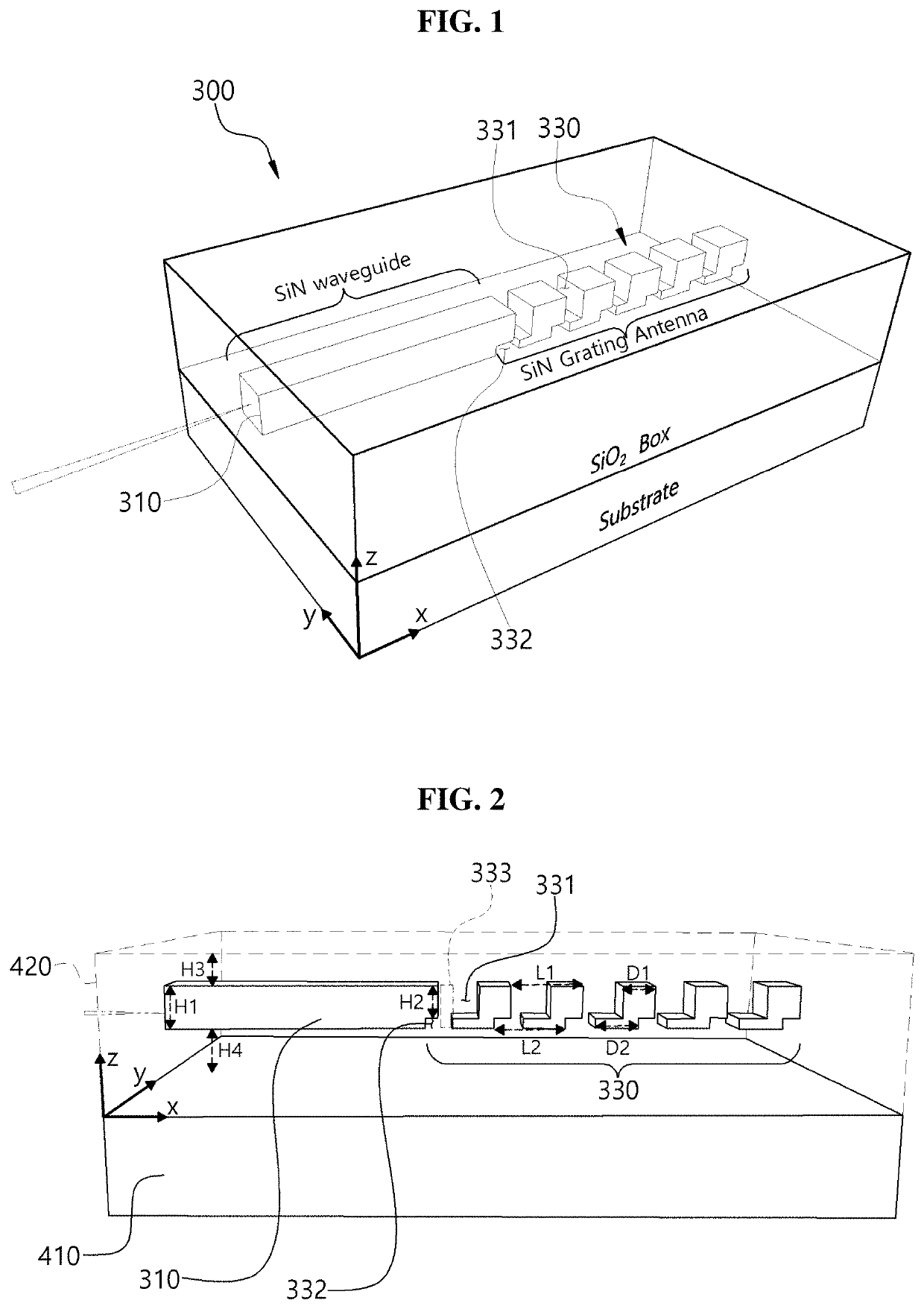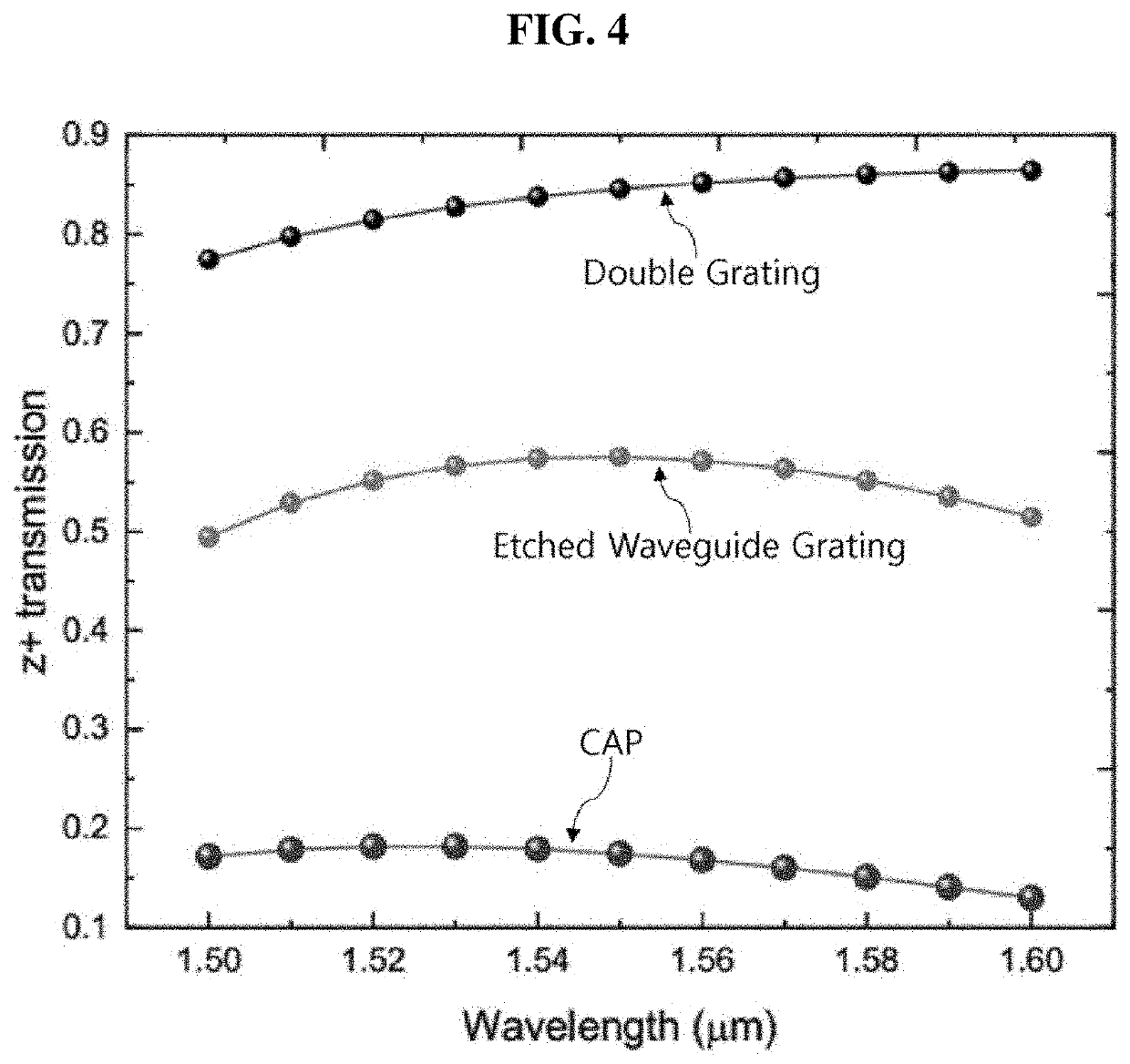Optical phase array antenna based on optical waveguide having double grating structure and lidar including the same
a phase array antenna and optical waveguide technology, applied in waveguides, antennas, instruments, etc., can solve the problems of limited power and weight, large amount of power, and inability to use, and achieve the effects of improving transmittance and directivity, light and cheaper, and mass production
- Summary
- Abstract
- Description
- Claims
- Application Information
AI Technical Summary
Benefits of technology
Problems solved by technology
Method used
Image
Examples
Embodiment Construction
[0046]Hereinafter, an optical phase array antenna employing an optical waveguide having a double grating structure according to the present disclosure will be described with reference to the accompanying drawings. As used herein, ‘one direction’ is illustrated as an ‘X-axis direction’ in the drawings and should be understood to mean a longitudinal direction of an optical phase array antenna according to the present disclosure. In the drawings, ‘width direction’ is illustrated as a ‘Y-axis direction’ and a ‘height direction’ is illustrated as a ‘Z-axis direction’. However, the directions defined herein are defined merely for convenience of understanding and thus the present disclosure is not limited thereby.
[0047]An optical phase array antenna according to the present disclosure will be described with reference to FIGS. 1 to 3, and components thereof will be described in conjunction with FIGS. 7 and 8.
[0048]The optical phase array antenna according to the present disclosure includes ...
PUM
| Property | Measurement | Unit |
|---|---|---|
| viewing angle | aaaaa | aaaaa |
| temperature | aaaaa | aaaaa |
| thickness | aaaaa | aaaaa |
Abstract
Description
Claims
Application Information
 Login to View More
Login to View More - R&D
- Intellectual Property
- Life Sciences
- Materials
- Tech Scout
- Unparalleled Data Quality
- Higher Quality Content
- 60% Fewer Hallucinations
Browse by: Latest US Patents, China's latest patents, Technical Efficacy Thesaurus, Application Domain, Technology Topic, Popular Technical Reports.
© 2025 PatSnap. All rights reserved.Legal|Privacy policy|Modern Slavery Act Transparency Statement|Sitemap|About US| Contact US: help@patsnap.com



